If you’re tired of ordering pizza delivery and want to try your hand at making your own mouthwatering creation, look no further. This article will guide you step-by-step on how to make the perfect homemade pizza. From choosing the right ingredients to mastering the art of kneading the dough, you’ll be serving up delicious, restaurant-quality pizzas in no time. Whether you’re a seasoned chef or a novice in the kitchen, this guide will ensure that each bite of your homemade pizza is a slice of pure perfection. Get ready to impress your friends and family with your newfound pizza-making skills!
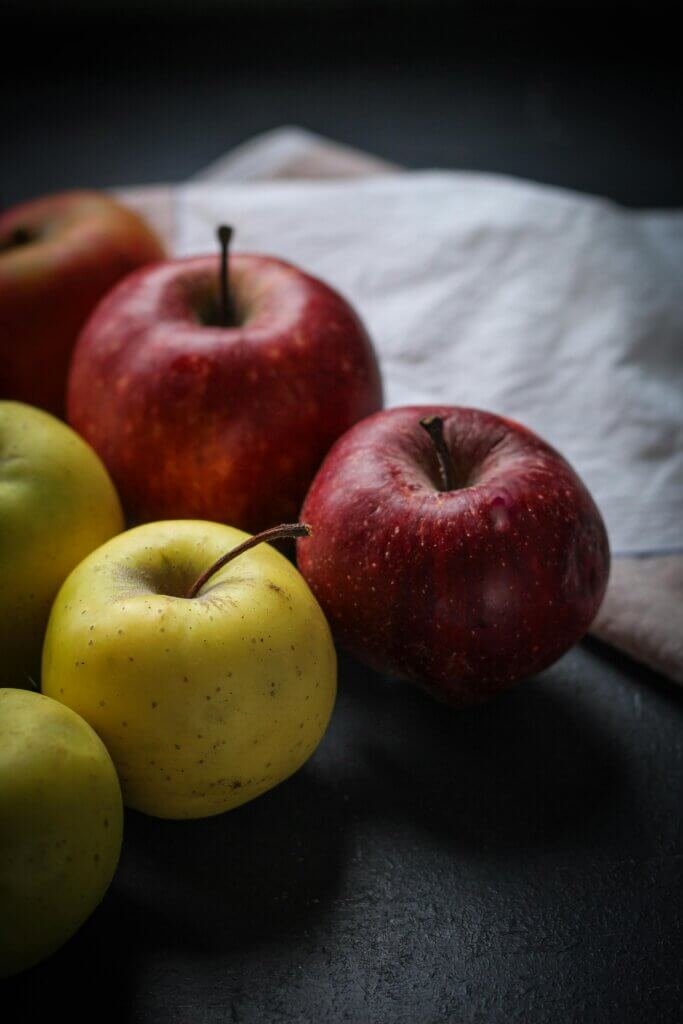
Selecting the Ingredients
Making the perfect homemade pizza starts with selecting the right ingredients. From the dough to the toppings, each component plays a crucial role in the final outcome of your pizza.
Choosing the Dough
The dough is the foundation of any pizza, so it’s important to choose the right one. You have a few options when it comes to dough selection. You can make it from scratch or opt for store-bought pizza dough. If you have the time and patience, making the dough from scratch can be a rewarding experience. However, if you’re short on time, store-bought dough is a convenient and delicious alternative.
Selecting the Sauce
The sauce is what adds flavor and moisture to your pizza. Traditional tomato sauce is always a popular choice, but you can also get creative and try different variations. Garlic and olive oil sauce adds a delightful punch to your pizza, while pesto sauce brings a fresh and vibrant taste. White sauce variations, such as Alfredo or béchamel, offer a creamy and indulgent option. Choose a sauce that complements your toppings and personal preference.
Picking the Cheese
Cheese is a key ingredient that adds richness and creaminess to your pizza. Fresh mozzarella is a classic choice, offering a soft and melty texture. Shredded mozzarella is another popular option that ensures even distribution of cheese throughout the pizza. Fontina cheese, with its mild and nutty flavor, adds a unique twist to your pizza. Parmesan cheese provides a strong and salty taste that pairs well with a variety of toppings. Choose the cheese that suits your taste and desired level of cheesiness.
Adding Toppings
Toppings are what make each pizza unique and flavorful. Classic pizza toppings like pepperoni, mushrooms, and olives are always crowd favorites. If you’re feeling adventurous, try gourmet toppings such as prosciutto, arugula, or goat cheese. Vegetarian options like bell peppers, onions, and artichokes offer a fresh and vibrant taste. Don’t be afraid to experiment with different flavor combinations to create a pizza that truly reflects your personal preferences.
Preparing the Dough
Once you’ve selected your ingredients, it’s time to prepare the dough. The dough is what gives your pizza its structure and texture. Whether you choose to make it from scratch or use store-bought dough, proper preparation is essential.
Making the Dough from Scratch
To make the dough from scratch, you will need flour, yeast, water, salt, and olive oil. Start by combining the flour and yeast in a mixing bowl, then gradually add water while stirring. Add salt and olive oil to enhance the flavor and texture of the dough. Knead the dough until it becomes smooth and elastic. Let the dough rest and rise in a warm place until it doubles in size.
Allowing the Dough to Rise
Allowing the dough to rise is an important step that ensures a light and airy crust. After kneading the dough, place it in a lightly oiled bowl and cover it with a clean cloth. Let it rise in a warm and draft-free area for about an hour or until it has doubled in size. This process allows yeast to ferment and produce carbon dioxide, creating air pockets that give the crust its desired texture.
Dividing and Shaping the Dough
Once the dough has risen, it’s time to divide and shape it. Divide the dough into individual portions, depending on the size of the pizzas you want to make. Shape each portion into a ball by folding the edges towards the center and pinching them together. Flatten the ball with your hands and use a rolling pin or your fingertips to stretch and shape the dough into a round or rectangular shape, depending on your preference. Be gentle while shaping the dough to avoid tearing or stretching it too thin.
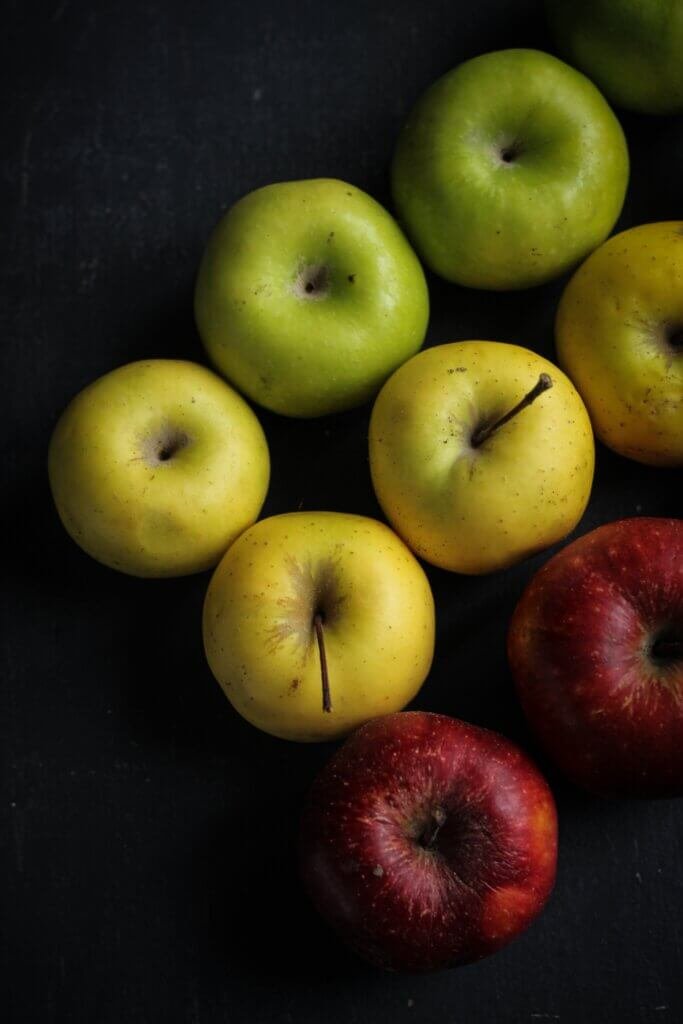
Creating the Sauce
The sauce is what brings your pizza to life, so it’s essential to choose or make a sauce that complements your toppings and enhances the overall flavor.
Classic Tomato Sauce
Classic tomato sauce is a staple for traditional pizzas. To make it, you’ll need canned crushed tomatoes, garlic, olive oil, and a blend of Italian herbs such as basil, oregano, and thyme. Start by sautéing the minced garlic in olive oil until it becomes fragrant. Add the crushed tomatoes and herbs, then simmer the sauce for about 15-20 minutes to allow the flavors to meld together. Season with salt and pepper to taste.
Garlic and Olive Oil Sauce
For a simple yet flavorful alternative, try a garlic and olive oil sauce. Heat olive oil in a pan and add minced garlic, allowing it to infuse the oil with its aromatic flavor. Be careful not to burn the garlic as it can turn bitter. Remove the pan from heat and let the mixture cool before spreading it on the dough. This sauce adds a fragrant and savory taste to your pizza.
Pesto Sauce
If you’re a fan of fresh and herbal flavors, pesto sauce is a must-try. In a food processor, blend fresh basil leaves, pine nuts, garlic, Parmesan cheese, and olive oil until smooth. Adjust the consistency by adding more olive oil if needed. Pesto sauce offers a vibrant and aromatic taste that pairs well with a variety of toppings.
White Sauce Variations
White sauce variations, like Alfredo or béchamel, provide a creamy and indulgent base for your pizza. To make a simple white sauce, melt butter in a saucepan and whisk in flour to create a roux. Gradually add milk and continue whisking until the sauce thickens. Season with salt, pepper, and any additional flavors like garlic or nutmeg. White sauces offer a rich and velvety texture that complements toppings like grilled chicken, spinach, or mushrooms.
Choosing the Cheese
The choice of cheese can make or break your pizza, so it’s important to select one that melts well and complements your sauce and toppings.
Fresh Mozzarella
Fresh mozzarella is a classic choice for pizza cheese, known for its soft and creamy texture. It melts beautifully and adds a gooey, stretchy factor to your pizza. Tear or slice the mozzarella into pieces and distribute it evenly over the sauce and toppings. Fresh mozzarella is particularly delicious when paired with tomato sauce and basil.
Shredded Mozzarella
Shredded mozzarella is a convenient option that ensures an even distribution of cheese throughout the pizza. It has a slightly drier texture compared to fresh mozzarella, but it still melts beautifully and provides a cheesy goodness to each bite. Sprinkle the shredded mozzarella evenly over the sauce and toppings, making sure to cover the entire pizza for a melty, cheesy experience.
Fontina Cheese
Fontina cheese is a semi-soft cheese with a mild and nutty flavor. It melts wonderfully and adds a unique twist to your pizza. Its creamy texture pairs well with a variety of toppings, from cured meats to caramelized onions. Grate or thinly slice the Fontina cheese and distribute it over the sauce and toppings, ensuring each bite is filled with its rich and savory taste.
Parmesan Cheese
Parmesan cheese offers a strong and salty taste that can elevate the flavors of your pizza. Grate or shave Parmesan cheese over the sauce and toppings to add a delicious umami kick. Its sharp and nutty flavor pairs well with a wide range of ingredients, from mushrooms and spinach to prosciutto and arugula. Be generous with the Parmesan cheese for a burst of savory goodness in every bite.
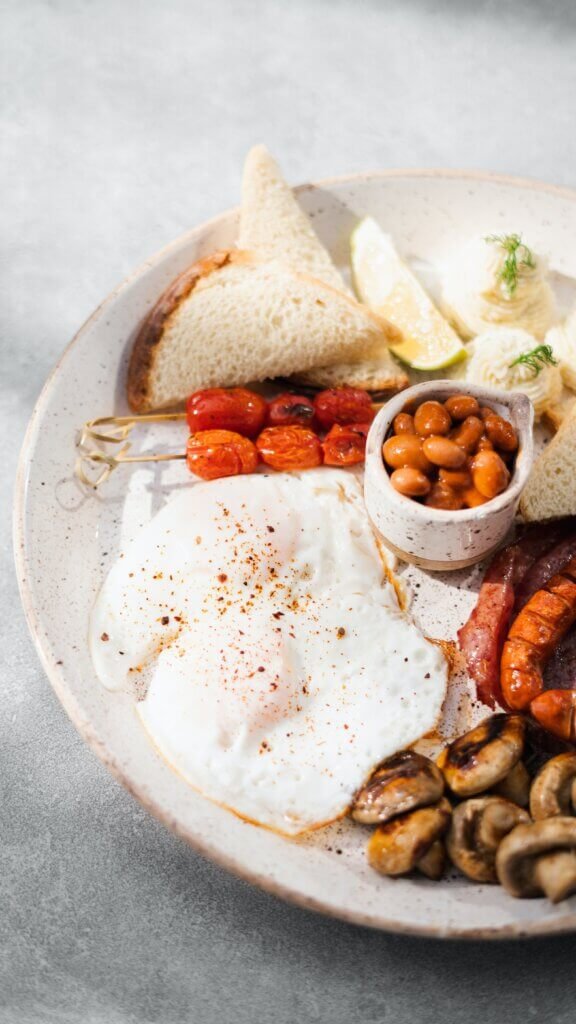
Adding Toppings
Toppings are where you can let your creativity shine and personalize your pizza according to your taste preferences. Whether you prefer classic toppings or want to experiment with unique flavor combinations, there are plenty of options to choose from.
Classic Pizza Toppings
Classic pizza toppings like pepperoni, mushrooms, and olives are always crowd pleasers. Pepperoni provides a spicy and savory kick, while mushrooms add an earthy and meaty flavor. Olives offer a briny and tangy taste that balances out the richness of your cheese and sauce. Combine these classic toppings to create a timeless and satisfying pizza.
Gourmet Pizza Toppings
For a more sophisticated and gourmet experience, try toppings like prosciutto, arugula, and goat cheese. Prosciutto adds a salty and savory touch, while fresh arugula adds a peppery and vibrant note. Goat cheese provides a creamy and tangy flavor that pairs well with a variety of ingredients. Experiment with these gourmet toppings to create a restaurant-quality pizza right in your own kitchen.
Vegetarian Pizza Toppings
Vegetarian options like bell peppers, onions, and artichokes offer a fresh and vibrant taste. Bell peppers add a colorful and crispy texture, while onions provide a slightly sweet and caramelized flavor. Artichokes bring a unique and slightly tangy taste that can elevate your vegetarian pizza. Combine these vegetarian toppings with your preferred sauce and cheese for a vegetarian-friendly pizza that is both delicious and satisfying.
Experimenting with Flavors
Don’t be afraid to get creative and experiment with different flavor combinations. You can try adding ingredients like pineapple for a sweet and tangy twist, or even barbecue sauce for a smoky and tangy flavor profile. Consider adding a touch of heat with jalapenos or a drizzle of honey for a hint of sweetness. The possibilities are endless, so have fun and let your culinary creativity shine through in your pizza creations.
Assembling the Pizza
Once you have all your ingredients ready, it’s time to assemble the pizza. Proper assembly ensures that each bite is balanced and packed with deliciousness.
Preparing the Work Surface
Before assembling your pizza, prepare a clean and lightly floured work surface. This will make it easier to handle the dough and prevent it from sticking. Dusting the surface with flour also adds a subtle crispiness to the bottom of your pizza.
Stretching and Shaping the Dough
Take one portion of dough and place it on the floured work surface. Using your hands or a rolling pin, gently stretch and shape the dough into your desired size and thickness. Be careful not to overwork the dough, as this can cause it to become tough or lose its elasticity. Aim for a thickness that is about 1/4 inch to ensure a crisp and airy crust.
Spreading the Sauce
Once you’ve shaped the dough, it’s time to spread the sauce. Using a spoon or ladle, start from the center of the dough and spread the sauce in a circular motion, working your way towards the edges. Be mindful not to add too much sauce, as this can make the pizza soggy. Leave a small border around the edge for the crust.
Sprinkling the Cheese
After spreading the sauce, evenly sprinkle your chosen cheese over the entire pizza. Make sure to cover the sauce layer completely for a gooey and melty experience. Adjust the amount of cheese based on your preference, whether you prefer a cheesy indulgence or a more balanced flavor.
Placing the Toppings
Now it’s time to get creative and add your toppings. Spread them evenly across the pizza, making sure not to overcrowd the surface. Remember, less is often more when it comes to pizza toppings. This will allow each ingredient to shine and avoid overwhelming the flavors.
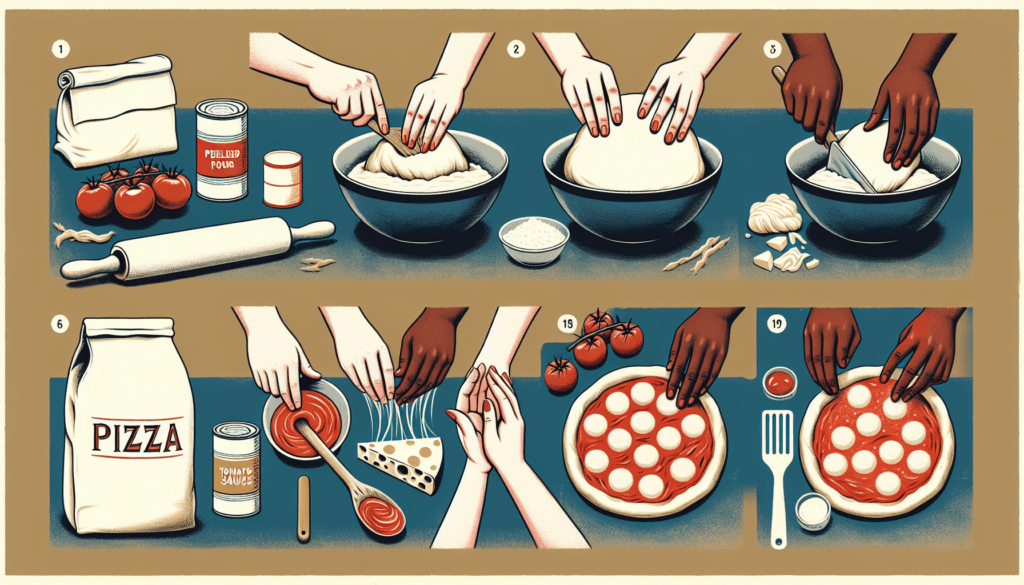
Baking the Pizza
The baking process is crucial in achieving the perfect homemade pizza. The right temperature and cooking method can make a significant difference in the texture and taste.
Preheating the Oven
To ensure a crispy and evenly cooked crust, preheat your oven to the highest temperature it can reach. Most home ovens can go up to 500°F (260°C) or higher. Preheating the oven allows it to reach the optimal temperature before you place the pizza inside.
Using a Pizza Stone
Using a pizza stone is a great way to achieve a professional-style crust. Place the pizza stone in the oven during the preheating process to ensure that it gets evenly heated. When you’re ready to bake, carefully transfer the assembled pizza onto the hot pizza stone using a pizza peel or a flat baking sheet. This method helps to create a perfectly crisp and evenly cooked base.
Baking in a Pan or Tray
If you don’t have a pizza stone, you can still achieve a delicious homemade pizza by baking it in a pan or tray. Lightly grease the pan or tray before transferring the assembled pizza onto it. Place the pan or tray on the middle rack of the preheated oven and bake until the crust is golden brown and the cheese is melted and bubbly.
Determining the Baking Time
The baking time can vary depending on your oven, the thickness of your crust, and the toppings you’ve used. On average, a homemade pizza takes about 10-15 minutes to bake at a high temperature. Keep a close eye on your pizza during the baking process to ensure that it doesn’t burn. The crust should be golden brown, the cheese melted, and the toppings cooked to perfection.
Enhancing the Flavor
To take your homemade pizza to the next level, consider enhancing its flavor with simple yet effective techniques and ingredients.
Using Fresh Herbs
Fresh herbs can add a burst of flavor and freshness to your pizza. After baking, sprinkle some chopped basil, oregano, or parsley over the hot pizza to infuse it with aromatic notes. The heat from the pizza will help release the flavors of the herbs, enhancing the overall taste.
Adding Garlic Butter
For a rich and indulgent touch, brush the crust with garlic butter before baking. Melt butter in a small saucepan and add minced garlic, allowing it to infuse the butter. Brush the garlic butter mixture over the crust edges, giving them a golden and flavorful finish.
Infusing Olive Oil
Infused olive oil can bring a unique and flavorful element to your pizza. Before baking, drizzle some infused olive oil over the pizza for a subtle yet distinctive taste. You can infuse the oil with ingredients such as garlic, chili flakes, or herbs. Simply heat the oil with the desired ingredient over low heat, then strain it to remove any solids before using.
Sprinkling Seasonings
Seasonings can elevate the overall taste of your pizza. Before baking, sprinkle some dried oregano, red pepper flakes, or a blend of Italian seasonings over the toppings. This will add complexity and a hint of spice to your pizza.
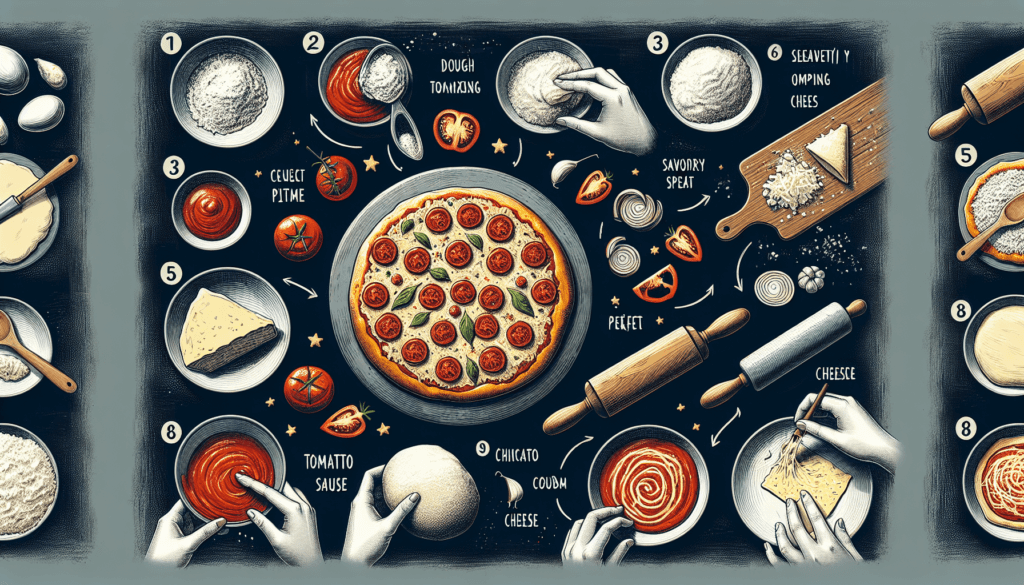
Serving and Enjoying
The final step is serving and enjoying your homemade pizza. Take the time to present it beautifully and savor the flavors.
Allowing the Pizza to Rest
Once the pizza is baked to perfection, it’s important to let it rest for a few minutes. This allows the cheese to set and prevents the toppings from sliding off when you cut into it. A resting time of about five minutes is usually sufficient to allow the pizza to cool slightly and settle.
Cutting and Serving
Using a sharp pizza cutter or a large knife, cut the pizza into slices or squares, depending on your preference. Serve the slices on a platter or individual plates. The aroma and visual appeal of a freshly baked homemade pizza are sure to impress your family and friends.
Pairing with Sauces or Dips
To enhance the flavors even further, consider serving your homemade pizza with additional sauces or dips. Tomato sauce, pesto, or garlic aioli can be served on the side for dipping or drizzling over individual slices. These accompaniments can add an extra burst of flavor and create a more interactive dining experience.
Accompanying Beverages
Complete your homemade pizza experience by selecting the perfect beverages to accompany your meal. Traditional choices like soda or beer are always popular, but feel free to experiment with other options. Consider pairing your pizza with a refreshing glass of iced tea, a crisp white wine, or a fruity craft beer to complement the flavors of your chosen toppings.
Customizing and Experimenting
The beauty of making homemade pizza is the ability to customize and experiment with different elements. Here are a few ideas to inspire your culinary creativity.
Trying Different Crust Styles
While a classic round crust is always a safe choice, don’t be afraid to try different crust styles. You can experiment with thin and crispy crusts, deep-dish styles, or even stuffed crusts. Each style offers a unique texture and flavor experience, so feel free to explore and find your personal favorite.
Exploring Unconventional Sauces
In addition to the classic tomato sauce and white sauce variations, there are numerous unconventional sauce options to try. Barbecue sauce, buffalo sauce, or even peanut sauce can add a surprising and delicious twist to your pizza. Let your taste buds guide you as you explore new flavors and combinations.
Mixing and Matching Cheeses
Don’t limit yourself to one type of cheese. Mixing and matching different cheeses can create a more complex and flavorful pizza. Experiment with combinations like Cheddar and Gouda, or Gruyère and Blue cheese. Each cheese brings its own unique characteristics and can elevate your homemade pizza to new heights of deliciousness.
Innovative Topping Combinations
The sky’s the limit when it comes to pizza toppings. Get creative and experiment with innovative combinations. Consider combining ingredients like figs and prosciutto, caramelized onions and brie, or roasted butternut squash and goat cheese. These unexpected flavor combinations can create a memorable and delicious pizza experience.
Remember, making the perfect homemade pizza is all about having fun and exploring your culinary creativity. Customizing and experimenting with different ingredients, sauces, and toppings will allow you to create a pizza that reflects your personal taste and preferences. So gather your ingredients, get creative in the kitchen, and enjoy the satisfaction of creating a delicious homemade pizza from start to finish.

